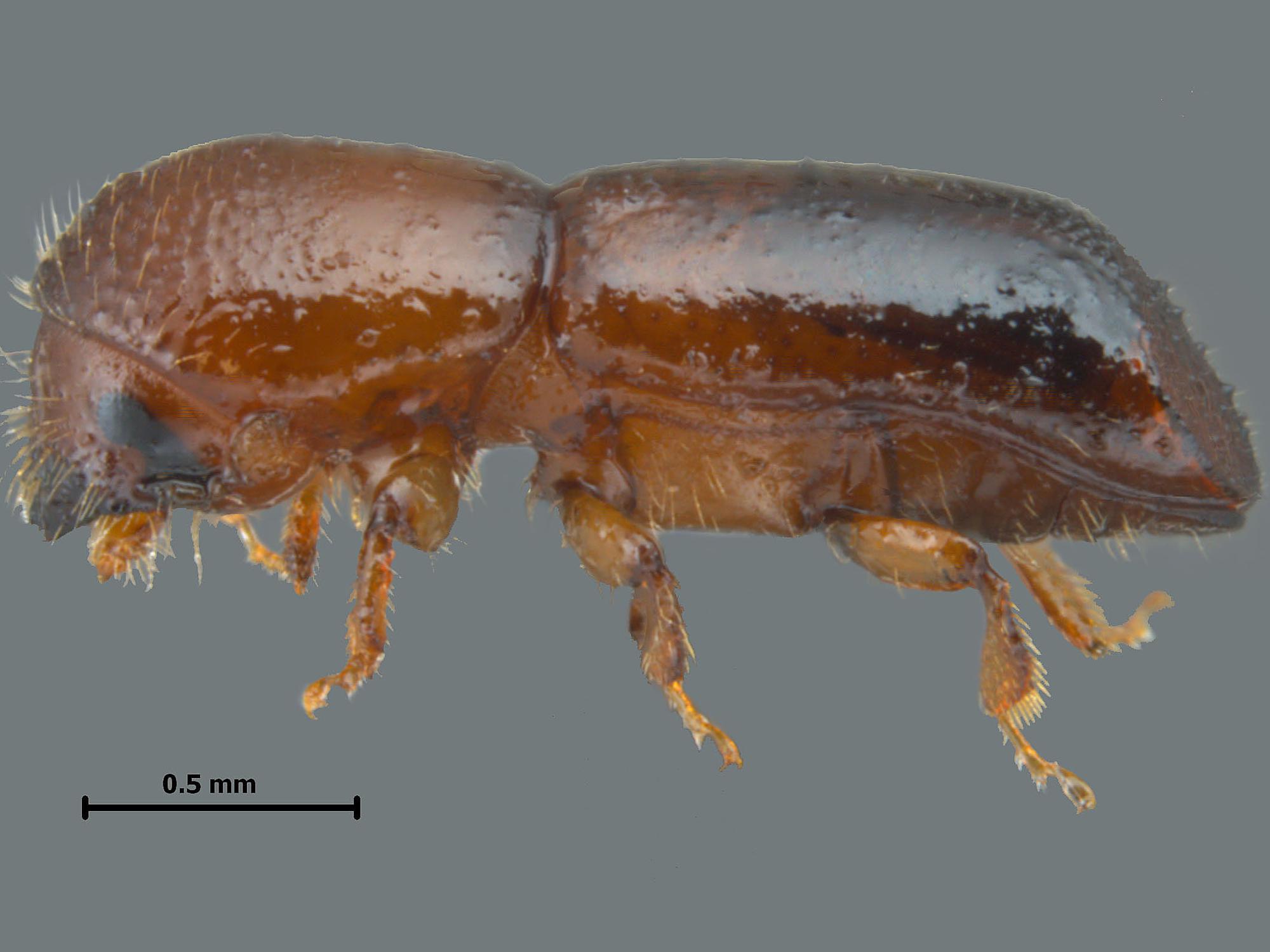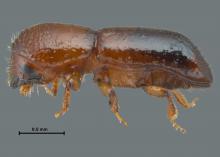Information Possibly Outdated
The information presented on this page was originally released on June 26, 2017. It may not be outdated, but please search our site for more current information. If you plan to quote or reference this information in a publication, please check with the Extension specialist or author before proceeding.
Nonnative beetle threatens an entire family of U.S. trees
STARKVILLE, Miss. -- It may have taken only one beetle and the fungus it carried to kill one-third of the nation’s redbay trees, according to scientists at Mississippi State University and the University of Florida.
Laurel wilt is a devastating disease of any tree or shrub species in the laurel family. The redbay ambrosia beetle, introduced from Asia into Georgia in 2002, carries the deadly fungus.
John Riggins, an MSU forest entomologist with the Mississippi Agricultural and Forestry Experiment Station, said 300 million redbay trees have succumbed to the disease, and related shrubs and trees are susceptible.
“The first time the redbay ambrosia beetle was encountered in the U.S. was in a trapping survey in Georgia in 2002,” Riggins said. “It was sort of written off at the time as an oddity. No one knew much about it, and often when you catch an insect like that around a port city, it’s not given much attention.”
But in 2004, large numbers of redbay trees around Jekyll Island, Georgia, began to die, and researchers began looking for a cause.
“They eventually showed that the redbay ambrosia beetle vectors -- or carries and transmits -- the fungus that causes a disease called Laurel wilt,” Riggins said.
The redbay ambrosia beetle arrived in Mississippi and was first detected in Jackson County in 2009. That was a 300-mile jump from the next nearest infestations in Georgia and Florida. The insect then jumped to central Louisiana, south Arkansas and now southeast Texas.
“We don’t know why it makes these big jumps,” Riggins said. “It likely happens in the movement of firewood or wood that people may be using for specialty projects. Redbay is not a commercial tree species, so it is not harvested for lumber, but some people like to use it for bowl turning or cabinet making.”
Certain types of ambrosia beetles are native to Mississippi and the United States. Most do not kill healthy trees but primarily attack those that are dead or dying.
“The female will bore a hole and lay eggs, while at the same time inoculating the tree with a fungus that helps decompose the wood,” Riggins said. “Most of the time, this is not destructive but part of the life cycle of a forest.”
Neither the insect nor the fungus are native species. However, they pose a serious threat to an entire family of related trees and shrubs, including avocado, sassafras, swamp bay, northern spicebush and others, including some species that are threatened or endangered.
Finding the cause of the plant deaths was just the beginning. Researchers then began looking very closely at the nonnative, invasive insect.
“After a lot of sampling and a long time, we were able to show that all this destruction and damage was potentially from the introduction of a single beetle and the fungi she carried,” Riggins said. “The vector and the pathogen entered North America as a single introduction.”
Riggins, who is also an associate professor in the MSU Department of Biochemistry, Molecular Biology, Entomology and Plant Pathology, examined the insects’ genetic material and determined that although they are found from Texas to North Carolina, the insects are genetically identical.
Jason Smith, a forest pathologist at the University of Florida School of Forest Resources and Conservation, examined the fungus at a genetic level.
“We know that this enormous number of trees has been killed from a single-strain organism. That is unprecedented in biology,” Smith said. “It was a pretty significant surprise for us to discover there was no genetic variation and a single-strain pathogen vector system has caused such diverse and severe damage across the landscape.”
Whether it is the flu virus in humans or a fungal disease in plants, Smith said, more genetically diverse pathogens cause greater problems for host populations. The laurel species of trees and shrubs is very diverse, but the single-strain pathogen being carried by the redbay ambrosia beetle is proving fatal to all hosts.
The researchers published a paper on their findings April 9 in the journal “Biological Invasions.” It documents the research that found a single founder event for the widespread devastation to the laurel species.
Determining how to stop the spread is the next challenge.
“It’s been a real tricky problem to figure out how to solve,” Riggins said. “After the insect and disease got here, the fungus was laterally transferred to other ambrosia beetles, making it extra difficult to control. The fact that only one female beetle has to survive adds to the difficulty.
“By the time the scope of the problem was understood, the beetle was so well established that there is not much we can do to stop it,” he said.
In Florida, the beetle and the fungus it transmits have caused catastrophic damage in some avocado groves. Riggins said there are measures commercial growers can take to minimize the damage in these managed situations.
“But we don’t have a way yet to control or stop the beetle in a natural forest,” he said. “There’s not a lot we can do to stop it at this point, because it’s too expensive and too massive an undertaking.”
Researchers are now looking at long-term solutions to the problem, including finding and then reintroducing native plants that are resistant to the fungus. In the meantime, losing large numbers of these trees and bushes is having an impact on local ecosystems.
“This disease not only impacts the plants, but also other insects that feed on trees within that family,” Riggins said. “Many insects could potentially be impacted by the extinction of native trees in the laurel family, so the problem radiates out in waves as insects are impacted by the death of their host.”
Contact: Dr. John Riggins, 662-325-2984







